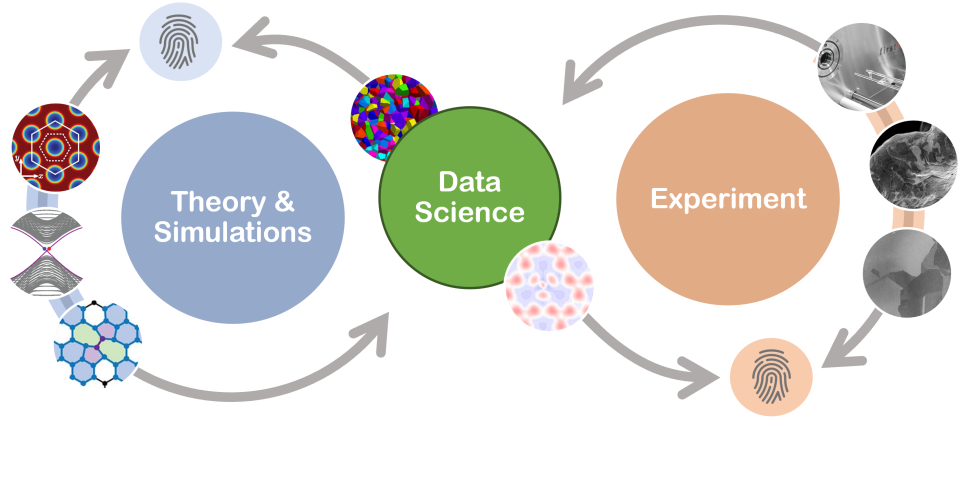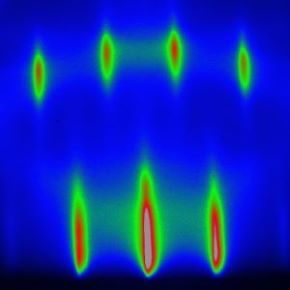Research Areas
AT SCALE is composed of two thrust areas that guide AT SCALE codesign efforts in developing closed-loop autonomous experimentation for materials synthesis. They span materials science, data science, computer science, and device design.
The two thrust areas represent key technical challenges across the proposed autonomous synthesis loop. Each thrust area includes multiple projects, which were intentionally designed to foster crosscutting collaborations.
Thrust Area 1: Workflows and Models
This thrust aims to provide the necessary integration of components developed in different projects required to create a generic framework for closed-loop workflows. We will employ a unified approach to data management and curation, a common framework for data embedding and knowledge representation, and integrations of simulations and models with decision and control algorithms. We will identify opportunities for hardware acceleration in each workflow component and use codesign techniques to develop accelerators to reduce the latency at each step. We will also explore potential collaborations with instrument vendors for further integration and codesign opportunities.

Thrust Area 2: Operando Synthesis and Characterization
The aim of this thrust is to deploy real-time control of synthesis and characterization, informed by latent or noisy processing signatures. Our approach is heavily interconnected with other thrust areas and motivated by the underlying scientific drivers in thin film synthesis and laser-based alloy processing. We are currently focused on manipulating atomic and microstructural order via nonequilibrium processing. We will implement on-the-fly diagnostics and hardware interfaces in precision molecular beam epitaxy synthesis and directed energy deposition. We will implement diagnostics based on in situ diffraction, flux monitoring, temperature, and optical probes to evaluate key structural, chemical, and property metrics in real-time. These diagnostics will later be used apply automatic feedback based on well-defined cost functions linked to microstructural or property outcomes. Collectively, this thrust will more intelligently manipulate matter and energy by establishing the groundwork for eventual closed-loop synthesis and characterization.
